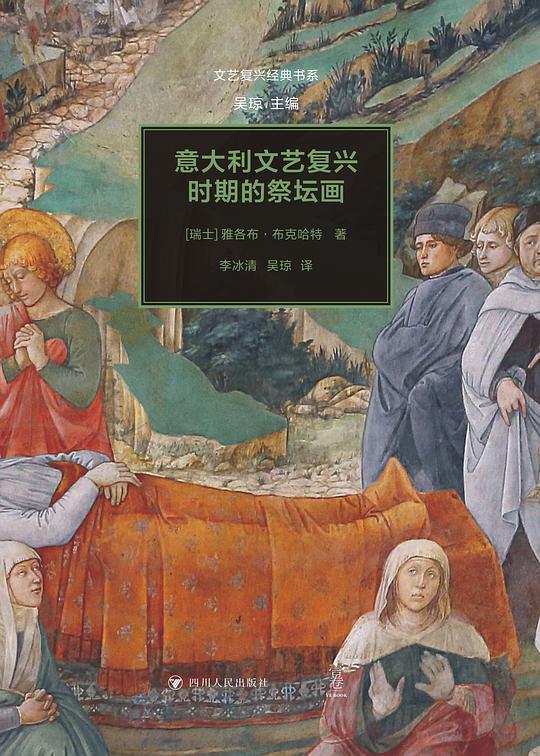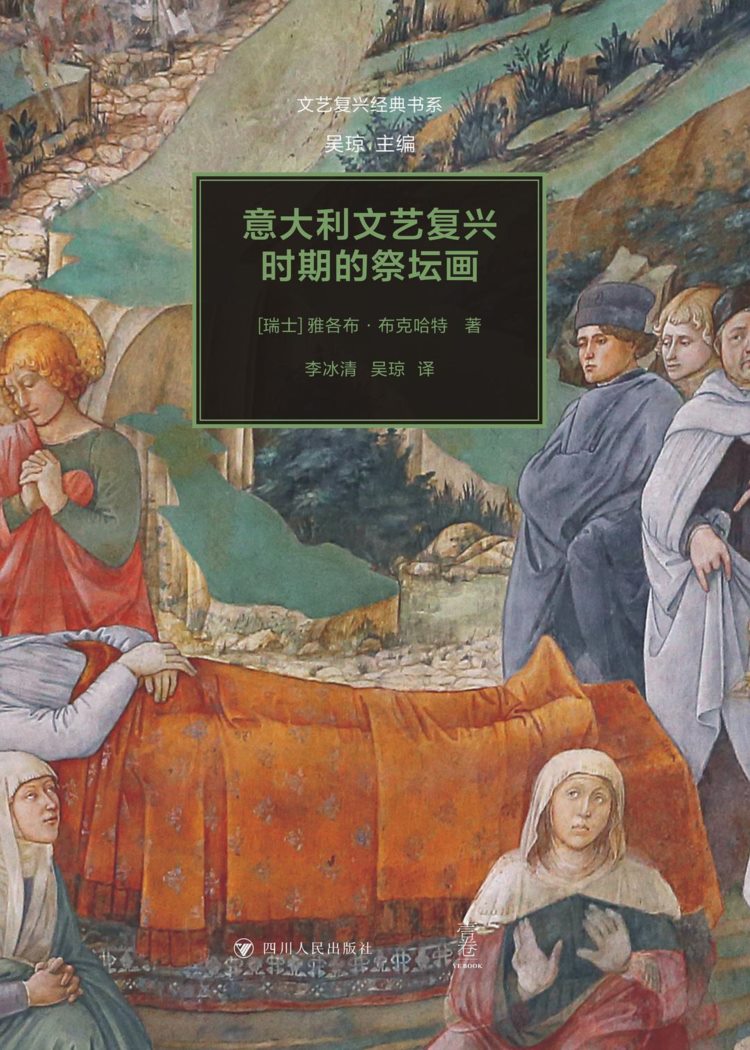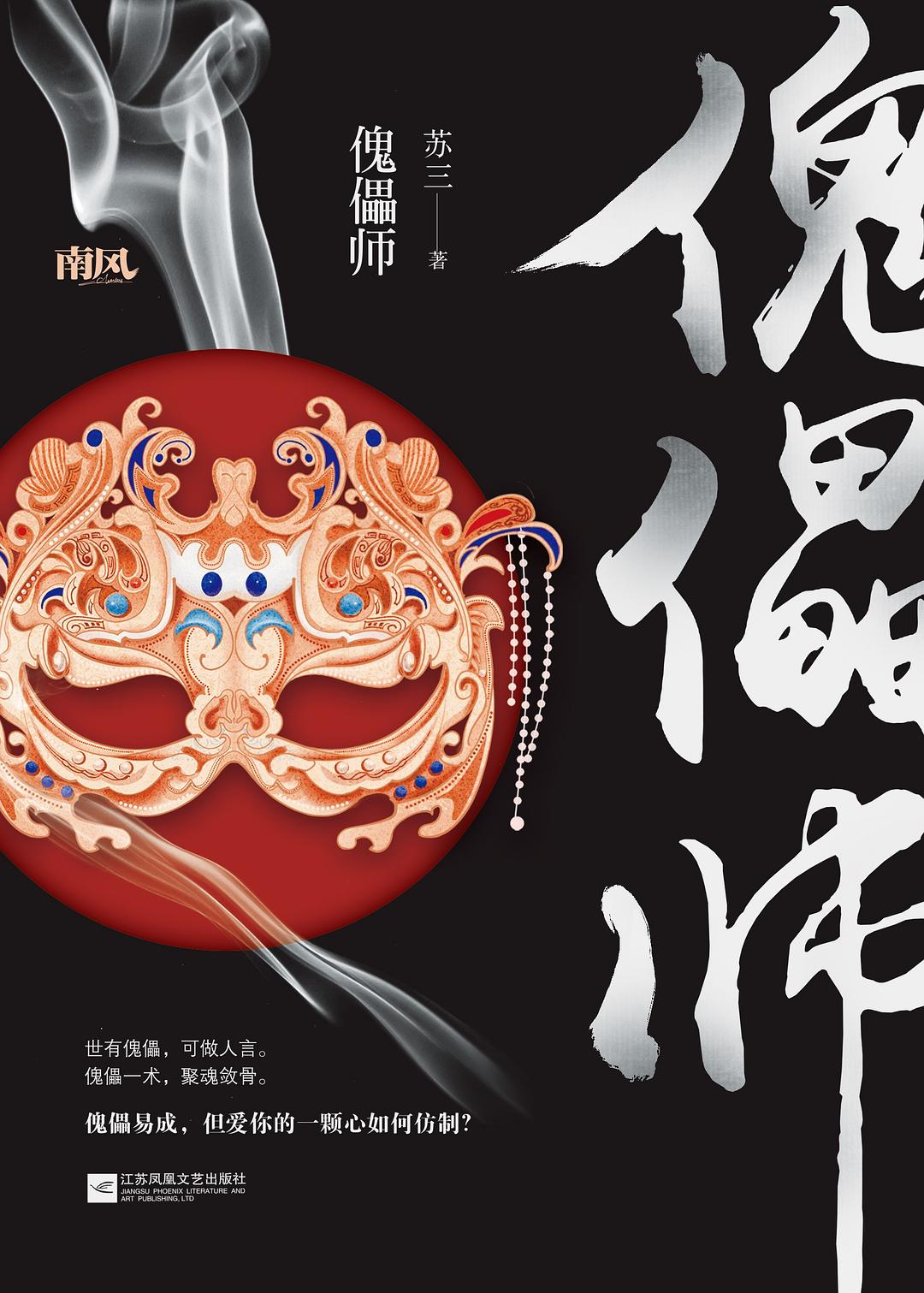
《意大利文艺复兴时期的祭坛画》美学之外,世俗之间
1
0

星星之火 2023-12-11 21:07:50
"Renaissance" originated from the French historian Jules Michelets work "Histoire De France" volume seven. In this volume, Michelet used the term "Renaissance" to distinguish it from medieval France, marking the arrival of the 16th century in France. Michelet enthusiastically wrote about "the discovery of the world and the discovery of man." Furthermore, "Renaissance" is the translation of the Italian word "Rinascita," which was used by humanists in Florence to differentiate their era from the preceding medieval period. In Jacob Burckhardts book, the Renaissance refers to the period of social and cultural transformation in 14th-16th century Italy. Unlike Michelet, who only proposed the concept of the Renaissance, Burckhardt fills the book with a wealth of political, religious, and cultural content, tracing everything back to the historical starting point.
Among Burckhardts studies of different types of images, his research on altar paintings is the most notable. This book collects these papers. Interestingly, altar paintings, as the most representative and abundant works of art in the field during the Renaissance period, both marked the beginning and end of the Renaissance. However, they have been neglected in the study of art history in that period. In Burckhardts narrative, the material forms of altar decorations transformed multiple times over the 300 years from the 13th to the 16th century, from sculptures in the 13th century to polyptychs in the 14th century, and then to rectangular panels after the 15th century. These changes in decorations were completed in a non-linear manner and bore religious meanings of that historical period.
Before diving into this book, besides the above basic knowledge, there is a tip for readers with weak foundations in religious and art history. Unlike traditional historiography that tends to use positivist writing, Burckhardts writing is more "free" and "expansive." This book is a collection of Burckhardts series of research papers on altar decorations during the Renaissance period. Therefore, readers may encounter some obstacles and resistance during the reading process. However, at the same time, Burckhardts writing style and his vast knowledge will bring various aspects of art appreciation and the shining historical background of that period.
Early Christian altar decorations consisted of purely decorative accessories, such as splendid vessels, crosses, and candlesticks. Regardless of changes in decorations or adjustments to the placement of items before and after the altar, traditional reverence and religious worship remained steadfast. So how did the specific changes in the materials of these altar decorations occur, and how do these changes relate to the doctrines they interpret? These changes may have had more practical significance compared to the religious meanings they conveyed. The transition from altar sculptures to altar paintings can be attributed to two reasons: economic factors and convenience. As these sculptures were usually enormous in size and used in the entrance area of the church choir, either suspended in mid-air or fixed on the altar, sometimes adjustments had to be made to the installed sculptures. Regardless of whether it is metal or stone, both materials lack the safety and convenience of altar paintings during specific usage processes. The economic reasons are more easily understood, and therefore will not be elaborated on here. Furthermore, if sculptures are devoid of painted altar decorations, it would be difficult to fully express their religious significance and emotions. (Although there are many reasons why altar paintings replaced altar sculptures and became the mainstream decorations, it must be said that Michelangelos "Pietà" still brings me long-lasting, pure shock and emotional impact across the long river of history, regional cultures, and knowledge reserves.)
After officially taking the spotlight, altar paintings continued to undergo various changes and adjustments. In this part of the content, there are also some interesting anecdotes with interconnections. For example, with the demand for altar paintings, local churches would usually commission artists with specific requirements. In 1285, the Brotherhood of the Virgin signed a detailed contract with Duccio for an altar painting. Choosing Duccio, a young outsider, may be due to the fact that Duccio was willing to accept the demanding conditions that famous Florentine painters were unable to accept at that time. When reading this part, I suddenly remembered a novel I read many years ago, "The Pillars of the Earth" by Ken Follett, which mainly tells the story of church construction. The novel provides a lot of insight into the struggles between the church and artisans during church construction and the thoughts of the artisans on their commissions (works). It can perhaps serve as a light popular science novel for further reading on religious art, such as altar paintings.
Since we have reached this point, let me conclude with a quote from "The Pillars of the Earth" by Ken Follett: "Proportion is the heart of beauty."
相关推荐
萤火谷的梦想家
艾莉森•麦吉出生于1960年,是美国《纽约时报》畅销书作家,同时也是大都会州立大学创意写作课的教授。她的作品被翻译成20多种语言并出版,也曾被提名普利策奖,并获得苏斯博士奖金奖、克里斯托弗图书奖、美国 [美]艾莉森•麦吉/[美]克里斯托弗•丹尼斯/绘 2023-03-27 16:50:25鬼马女神捕1·绝密卧底(上)
腹黑凤凰vs毒舌鸡妖——蓝翎:“小姬,跟我去人界吧!”姬十四:“干吗?让人宰了我做小鸡炖蘑菇吗?”蓝翎:“不啊,让妖怪宰了你做小鸡炖蘑菇更气派。”凤凰蓝翎和鸡妖姬十四生活在无忧无虑的灵界。他们的故乡叫 郝天晓 2023-04-17 00:22:47© 2023-2025 百科书库. All Rights Reserved.












发表评价